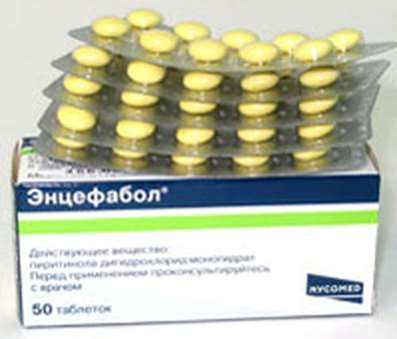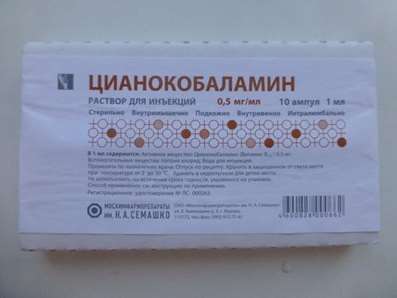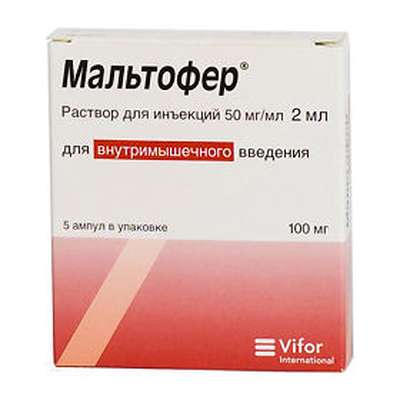Instruction for use: Isoprinosine
I want this, give me price
Dosage form: tablets
Active substance: Inosinum pranobexum
ATX
J05AX05 Inosin pranobex
Pharmacological group:
Immunostimulating agent [Antiviral (excluding HIV) means]
The nosological classification (ICD-10)
A60 Anogenital herpetic viral infection [herpes simplex]: Herpes simplex genitalis; Banal recurrent genital herpes; Secondary genital herpes; Genital herpesvirus infection; Genital herpetic infections; Genital herpes; Herpes genitalia; Genital herpes; Herpes simplex organs; Herpetic lesions of the mucocutaneous urinary organs; Herpetic lesions of the genitals; Primary genital herpes; Primary herpes simplex; Simple herpes extragenital and genital localization; Recurrent genital herpes; Recurrent herpes of genital organs; Herpes of the lips and genitals
B00 Infections caused by the herpes simplex virus [herpes simplex]: Herpes simplex; Herpes virus; Herpes simplex virus; Herpes simplex virus type I and II; HSV; Herpes; Herpes simplex / herpes simplex /; Herpes lips; Herpes simplex; Herpes in patients with immunodeficiency; Labial herpes; Acute herpetic disease of the mucous membranes; Herpes simplex; Herpes simplex skin and mucous membranes; Herpes simplex with skin and mucous membrane damage; Recurrent herpes; Urogenital herpetic infection; Chronic recurrent herpesvirus infection; Herpes-viral infections of various localizations
B01 Varicella [varicella]: Chicken pox; Newborn chickenpox; Varicella Zoster; Smallpox chickenpox; Herpes Varicella zoster
B02 Shingles [herpes zoster]: Herpes zoster; Herpes zoster; Shingles Herpes; Localized shingles; Infection caused by the herpes zoster virus; Shingles
B05 Measles: Koplik Spots; Koryvyaya rash on the mucous cheek
B07 Viral Warts: Warts; Human Wart Virus; Vulgar warts; Flat wart; Flat and vulgar wart in children; Plantar wart; Common wart; Common plantar wart; Skin Papillomas
B08.1 Molluscum contagiosum: Molluscum contagiosum
B25 Cytomegalovirus: Generalized CMV infection in patients with AIDS; Cytomegalovirus infection in patients with impaired immunity; Cytomegalovirus infection; Cytomegalovirus infection in patients with habitual miscarriage Cytomegalovirus retinitis; Cytomegalovirus retinitis in AIDS patients; CMV; CMV in AIDS patients; CMV infection; CMV infection in the presence of immunodeficiency; CMV infection in cancer patients with immunosuppression; CMV-pneumonia; CMV retinitis in patients with weakened immunity; CMV retinitis in AIDS patients
B27 Infectious mononucleosis: Mononuclear angina; Adenosis multigandular; Lymphoid cell aneurysm; Monocyte angina; Pfeiffer's disease; Türkic Disease; Filatova's disease; Pfeiffer's fever; Lymphoblastosis benign acute; Infectious lymphomononucleosis; Fever; Fever glandular idiopathic; Complications of infectious mononucleosis
B97.7 Papillomavirus: Human papillomavirus; Asymptomatic selection of human papillomavirus; Papillomavirus infection; The papilloma virus; Upper respiratory tract papillomatosis; Papillomovirus infection; Human papillomaviruses
H19.1 Keratitis due to herpes simplex virus, and keratoconjunctivitis (B00.5 +): Recurrent ophthalmoherpes; Ophthalmoherpes; Herpetic keratoconjunctivitis; Herpetic conjunctivitis
J06 Acute upper respiratory tract infections of multiple and unspecified locations: Frequent colds of viral diseases; Infections of ENT organs; Acute respiratory illness of influenza nature; Pain for colds; Acute catarrhal disease; Cold; Colds; Colds; Respiratory infection; Seasonal catarrhal disease; Seasonal colds; Pain in infectious and inflammatory diseases of the upper respiratory tract; Bacterial infections of the upper respiratory tract; Bacterial infections of the respiratory system; Viral respiratory disease; Viral respiratory tract infections; Inflammatory disease of the upper respiratory tract; Inflammatory diseases of the upper respiratory tract; Inflammatory diseases of the upper respiratory tract with difficult to separate sputum; Inflammatory respiratory disease; Secondary infections for colds; Difficult sputum separation in acute and chronic respiratory diseases; Upper respiratory tract infections; Infections of the upper respiratory tract; Respiratory tract infections; Respiratory and lung infections; Infectious-inflammatory diseases of the upper respiratory tract; Infectious-inflammatory diseases of the upper respiratory tract and ENT organs; Infectious-inflammatory diseases of the upper respiratory tract in adults and children; Infectious-inflammatory diseases of the upper respiratory tract; Infectious inflammation of the respiratory tract; Respiratory tract infection; Qatar upper respiratory tract; Catarrh of the upper respiratory tract; Catarrh of the upper respiratory tract; Catarrhal phenomena from the upper respiratory tract; Cough in diseases of the upper respiratory tract; Cough for colds; ARVI; ARI; ARI with phenomena of rhinitis; Acute respiratory infection; Acute infectious-inflammatory disease of the upper respiratory tract; Acute respiratory disease; Persecution in the throat or nose; Respiratory and viral infections; Respiratory diseases; Respiratory infections; Recurrent respiratory tract infections; Secondary infections with influenza; Influenza states; Feverish conditions for influenza
J11 Influenza, virus not identified: Influenza; Influenza in the early stages of the disease; Influenza in children; cold in the chest; Begins flu-like condition; Acute disease parainfluenza; parainfluenza; parainfluenza state; influenza epidemics; The pains of the influenza
J38.1 Polyp of the vocal fold and larynx: Juvenile papillomas of the larynx; Laryngopapillomatosis; Respiratory papillomatosis of the larynx; Air cysts of the larynx; Polyps of vocal cords
N73.9 Inflammatory diseases of female pelvic organs, unspecified: Urogenital tract infections; Abscess of pelvic organs; Bacterial diseases of the urogenital tract; Bacterial infections of the genitourinary system; Bacterial infections of the pelvic organs; Intraluminal infections; Inflammation in the area of throat of the uterus; Inflammation of the organs of the small pelvis; Inflammatory disease of the pelvic organs; Inflammatory gynecological diseases; Inflammatory diseases of female pelvic organs; Inflammatory diseases of the pelvic organs; Inflammatory diseases of pelvic organs; Inflammatory infections in the pelvis; Inflammatory processes in the pelvis; Gynecological infection; Gynecological infections; Gynecological infectious diseases; Pyoinflammatory diseases of the pelvic organs; Infections of female genital organs; Infections of the pelvic organs in women; Infections of the pelvic organs; Infectious diseases of the reproductive system; Infectious diseases of genital organs; Infection of female genital organs; Metritis; Acute infection of female genital organs; Acute pelvic inflammatory disease; Tubo-ovarian inflammation; Chlamydial gynecological infections; Chronic inflammatory diseases of the pelvic organs; Chronic inflammatory diseases of appendages; Chronic infections of female genital organs; Pelvic infection
Composition
Tablets - 1 table.
active substance: Inosine pranobex 500 mg
Auxiliary substances: mannitol; Wheat starch; Povidone; Magnesium stearateg
Description of dosage form
Tablets: oblong, biconvex form of white or almost white with a slight amine odor, with a risk on one side.
Pharmachologic effect
Mode of action - antiviral, immunostimulating.
Pharmacodynamics
Isoprinosine is a synthetic complex purine derivative that has immunostimulatory activity and a nonspecific antiviral effect. It restores the function of lymphocytes under conditions of immunodepression, increases blastogenesis in a population of monocytic cells, stimulates the expression of membrane receptors on the surface of T-helpers, prevents the decrease in activity of lymphocyte cells under the influence of GCS, normalizes the incorporation of thymidine into them. Isoprinosine has a stimulating effect on the activity of cytotoxic T-lymphocytes and natural killers, the function of T-suppressors and T-helpers, increases the production of IgG, interferon-gamma, IL-1 and IL-2, reduces the formation of pro-inflammatory cytokines - IL-4 and IL- 10, potentiates the chemotaxis of neutrophils, monocytes and macrophages.
The drug exhibits antiviral activity in vivo against the viruses Herpes simplex, CMV and measles virus, human T-cell lymphoma virus type III, polioviruses, influenza A and B, ECHO virus (enterocytopathogenic human virus), encephalomyocarditis and equine encephalitis. The mechanism of antiviral action of Isoprinosine is associated with inhibition of viral RNA and the enzyme dihydropteroate synthetase involved in the replication of some viruses, enhances the virus-suppressed synthesis of mRNA lymphocytes, which is accompanied by suppression of the biosynthesis of viral RNA and translation of viral proteins, increases the production of lymphocytes possessing antiviral properties of interferons-alpha and gamma. With a combined prescription enhances the action of interferon-alpha, antiviral agents of acyclovir and zidovudine.
Pharmacokinetics
After ingestion, the drug is well absorbed from the digestive tract. Cmax of ingredients in blood plasma is determined after 1-2 hours.
Rapidly exposed to metabolism and released through the kidneys. Metabolized similarly to endogenous purine nucleotides with the formation of uric acid. N-N-dimethylamino-2-propranololone is metabolized to the N-oxide, and para-acetamidobenzoate to o-acylglucuronide. No cumulation of the drug in the body. T1 / 2 is 3.5 hours for N-N-dimethylamino-2-propranololone and 50 minutes for para-acetamidobenzoate. Elimination of the drug and its metabolites from the body occurs within 24-48 hours.
Indication of the Isoprinosine
Treatment of influenza and other ARVI;
Infections caused by the Herpes simplex virus 1, 2, 3 and 4 types: genital and labial herpes, herpetic keratitis, shingles, chicken pox, infectious mononucleosis caused by the Epstein-Barr virus;
Cytomegalovirus infection;
Measles of heavy current;
Papillomavirus infection: laryngeal papilloma / vocal cords (fibrous type), papillomavirus infection of genitalia in men and women, warts;
Molluscum contagiosum.
Contraindications
Hypersensitivity to the components of the drug;
gout;
urolithiasis disease;
Arrhythmias;
Chronic renal failure;
Children's age to 3 years (body weight up to 15-20 kg).
Application in pregnancy and breastfeeding
It is not recommended to apply the drug during pregnancy and during lactation, The safety of the application was not investigated.
Side effects
The incidence of adverse events after the use of the drug is classified according to WHO recommendations: often (≥1 and <10%); Sometimes (≥0.1 and <1%).
From the digestive tract: often - nausea, vomiting, pain in epigastrium; Sometimes diarrhea, constipation.
From the liver and biliary tract: often - a temporary increase in the activity of transaminases and alkaline phosphatase in the blood plasma, an increase in the concentration of urea in the blood plasma.
From the skin and subcutaneous fat: often - itching.
From the nervous system: often - headache, dizziness, weakness; Sometimes drowsiness, insomnia.
From the urinary system: sometimes - polyuria.
From the musculoskeletal system and connective tissue: often - joint pain, exacerbation of gout.
Interaction
Immunosuppressants can reduce the effectiveness of the drug. Xanthine oxidase inhibitors and uricosuric agents (including diuretics) may contribute to the risk of increasing the level of uric acid in the serum of patients taking Isoprinosine.
Dosing and Administration
Inside, after eating, with a small amount of water.
The recommended dose for adults and children from 3 years (body weight from 15-20 kg) is 50 mg / kg / day, divided into 3-4 doses. Adults - 6-8 tablets / day, children - 1/2 table / 5 kg body weight / day. In severe forms of infectious diseases, the dose can be increased individually to 100 mg / kg / day, divided into 4-6 receptions. The maximum daily intake for adults is 3-4 g / day, for children - 50 mg / kg / day.
Duration of treatment
In acute diseases: the duration of treatment in adults and children is usually from 5 to 14 days. Treatment should continue until the disappearance of clinical symptoms and for another 2 days already in the absence of symptoms. If necessary, the duration of treatment can be increased individually under the supervision of a doctor.
With chronic relapsing diseases in adults and children, treatment should be continued with several courses for 5-10 days with a break in admission in 8 days.
For maintenance therapy, the dose can be reduced to 500-1000 mg per day (1-2 tablets) for 30 days.
In herpetic infection, adults and children are prescribed for 5-10 days before the symptoms disappear, in the asymptomatic period - 1 table. 2 times a day for 30 days to reduce the number of relapses.
With papillomavirus infection, adults are prescribed 2 tablets. 3 times a day, children - 1/2 table / 5 kg body weight / day in 3-4 hours for 14-28 days in the form of monotherapy.
With recurrent genital warts, adults are prescribed 2 tablets. 3 times, children - 1/2 table / 5 kg body weight in 3-4 doses per day either as monotherapy, or in combination with surgical treatment for 14-28 days, then with a three-fold repetition of this course at intervals of 1 month
When dysplasia of the cervix, associated with the human papillomavirus, appoint 2 tablets. 3 times a day for 10 days, then conduct 2-3 similar courses with an interval of 10-14 days.
Overdose
Cases of drug overdose are not described.
Special instructions
After a 2-week application of Isoprinosine, the concentration of uric acid in serum and urine should be monitored.
At long reception, after 4 weeks of application it is expedient to spend every month the control of functions of a liver and kidneys (activity of transaminases in a blood plasma, a creatinine, a uric acid).
It is necessary to monitor the level of uric acid in the blood serum when prescribing Isoprinosine in combination with drugs that increase the level of uric acid, or drugs that disrupt kidney function.
Impact on the ability to drive vehicles and other mechanisms. There are no special contraindications.
Release form
Tablets, 500 mg. In the blister (PVC / PVDC and aluminum foil), 10 pcs. 2, 3 or 5 blisters in a pack of cardboard.
Manufacturer
Technical pharmaceutical society "Luzomedikamenta". st. Consilieri Pedrozu, 69-B, Keluz de Baixo, 2730-055 Barkarena, Portugal.
Packer: Technical Pharmaceutical Society "Luzomedikamenta", Portugal or Pharmaceutical Plant Teva Praivet Co.. Ltd., Hungary.
Legal entity in whose name the registration certificate was issued: Teva Pharmaceutical Enterprises Ltd., Israel.
Conditions of supply of pharmacies
On prescription.
ISPR-RU-00266-DOK-PHARM
Storage conditions of the drug Isoprinosine
In dry, the dark place at a temperature of no higher than 25 ° C.
Keep out of the reach of children.
Shelf life of the drug Isoprinosine
5 years.
Do not use after the expiry date printed on the package.

 Cart
Cart





